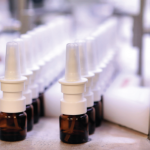Paradigm-Shifting Paper
On the topic of bone formation, a “paradigm-shifting paper” was published this year, shedding light on the factors involved in the ability of inflammation to induce bone formation, Dr. Gravallese said. It showed that the cytokine interleukin 23, which is upregulated in ankylosing spondylitis, plays a “very critical role” in this process. It induces, in vivo, enthesitis and enthesial bone formation prior to synovitis.3
Another question that has largely stumped researchers—but that, if solved, could help lead to new therapies—is why bone repair is so rare in RA, happening in only approximately 10% of cases, even when erosion has been stopped with biological agents.
Dr. Gravallese’s lab examined osteoblast activity with respect to the amount of disease activity in mice with inflammatory arthritis. They saw bone formation rates rise and fall along with the severity of inflammation.
“What was really interesting to us about this is that inflammation had to almost completely resolve before the osteoblast precursors came in and lined the eroded bone surfaces and began to make bone,” Dr. Gravallese said. “This suggests that inflammation might be suppressing the ability of the osteoblast to form bone in this model.”
The Wnt signaling pathway has proven to be a crucial mechanism at work here. Wnt ligands help make osteoblast differentiation possible by stabilizing the protein beta catenin.
But there is a natural inhibition of this pathway: the Dickkopf (DKK) family of inhibitors and secreted Frizzled-Related proteins family of inhibitors are proteins that can interfere with Wnt function.
“There’s a great deal of evidence now that DKK1 can regulate bone formation and that it plays a role in rheumatic diseases,” Dr. Gravallese said.
The bottom line, she said, is that “inflammation leads to proinflammatory cytokine production and the upregulation of antagonists of the Wnt pathway,” but as inflammation wanes the process reverses and erosion repair is seen.
This all has “some interesting implications for rheumatoid arthritis,” she said. But she cautioned that, “we have to be careful because these animal models are models of acute inflammation whereas our patients with rheumatoid arthritis have chronic inflammation. And, therefore, chronic inflammation in the bone marrow could lead to an alteration in the mesenchymal precursor cell, so that perhaps there are no osteoblast precursors available to lay down bone.”
There are many clinical questions that remain, Dr. Gravallese said. For one thing, ultimately how important is it to heal erosions?
